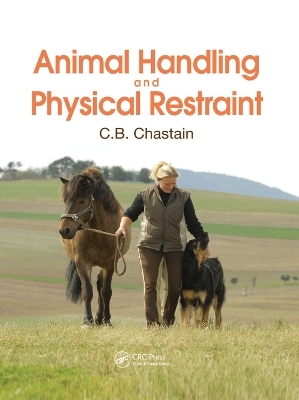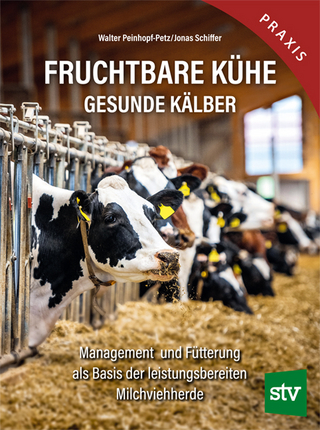
Animal Handling and Physical Restraint
CRC Press (Verlag)
978-0-367-02832-9 (ISBN)
3* Doody’s Star Rating®
Proper handling and restraint are essential to the welfare of captive animals, allowing them to be examined, groomed and treated in ways that contribute to their optimum quantity and quality of life. The aim of the book is to prepare future or current veterinarians and veterinary technologists, technicians/nurses, and assistants to be able to handle animals more safely and gain the confidence of animals and their owners. In turn, they will be able to instruct owners in proper animal handling methods, reducing the risk of physical injury or mutual infectious diseases.
Covers more species and has greater depth in handling and restraint methods of domestic animals than any of its predecessors and current competitors.
No other handling book provides this breadth information on the possible zoonoses (animal to human diseases) that might be encountered in handling apparently healthy animals.
Restraint methods are well described but not in a list or "cookbook" way, as there are always nuances in handling each individual animal that require individual adaptations.
Throughout the book, the author emphasises that each animal is an individual and each handling environment provides its own advantages and disadvantages: handling an animal safely, humanely and efficiently requires practical knowledge of the species’ normal behaviour. This is explored in detail in each of the species-based chapters, which cover proper handling of domestic household and laboratory animals, as well as farm and ranch animals where safe handling aids the producer in both humane practice and greater profitability.
After reading this book, the practitioner or student will be versed in the most basic part of the art of veterinary medicine: the safe handling of animals.
You can hear the author discuss the topics covered in this book on his weekly podcast ‘Better Animal Handling’: https://www.betteranimalhandling.com, discussing content in the book and describing effective, humane animal handling with emphasis on safety measures to prevent injury and the transmission of zoonotic diseases. You can read more on the supporting website: www.betteranimalhandling.com.
C.B. is a professor of veterinary medicine and former Section Head of Small Animal Medicine and Associate Dean for Academic Affairs. In addition to being a Diplomate of the American College of Veterinary Internal Medicine, he has authored journal articles, book chapters in veterinary medical and allied publications, and a textbook on clinical endocrinology. Prior to entering academic veterinary medicine, he was a horse wrangler for a horseback riding stable and a licensed guide in Rocky Mountain National Park, Colorado; worked in mixed animal veterinary medical practices in Missouri, Illinois, and New Mexico; and a captain in the U.S. Air Force Veterinary Corps. He has handled and restrained a variety of animals in differing environments and taught aspects of animal handling for more than 40 years at the undergraduate and professional school levels. Currently, he is the Director of Veterinary Online Programs at the University of Missouri and chief editor of the monthly journal, Advances in Small Animal Medicine and Surgery.
SECTION I: PRINCIPLES OF SAFER HANDLING AND RESTRAINT. Chapter 1: Safer Domestic Animal Handling and Restraint: Attrition of Proper Handling; Types of Handlers and Handling; The More Effective Handler: The Art of Firm Kindness; Conditions for Handling and Restraint; Risks of Injury; Risks of Disease to Handlers and to Other Animals; Ethical Concerns; Sanitation Practicalities; Legal Considerations; Extended Benefits of Animal Handling; Keys to Good Handling of All Animals. Chapter 2: Animal Behavior: Predator or Prey Mentality; Animal Societies; Imprinting Social Behavior with Humans; Flight and Personal Zones; Senses of Danger; Resistance Behaviors; Species Differences in Aggression and Avoidance; Health and Behavior; Stereotypic Behavior; Animal Behavior Specialists. SECTION II: HOUSEHOLD AND LABORATORY ANIMALS. Chapter 3: Containment for Household, Yard, and Laboratory Animals: Confinement and Behavior; Containment and Liability; Dog Containment; Cat Containment; Other Small Mammal Containment; Caged Companion Bird Containment; Reptile Containment.Chapter 4: Dogs: Natural Behavior of Dogs; Safety First; Approaching and Catching; Handling for Routine Care and Management; Handling and Restraint for Medical Procedures by Veterinary Professionals. Chapter 5: Cats: Natural Behavior of Cats; Safety First; Approaching and Catching; Handling for Routine Care and Management; Handling and Restraint for Medical Procedures by Veterinary Professionals. Chapter 6: Other Small Mammals: Natural Behavior of Small Mammals; Safety First; Mice; Rats; Hamsters; Gerbils; Guinea Pigs; Chinchillas; Degus; Sugar Gliders; African Pygmy Hedgehogs; Rabbits; Ferrets. Chapter 7: Companion Birds: Natural Behavior of Companion Birds; Safety First; Approaching and Catching; Handling for Routine Care and Management; Handling and Restraint for Medical Procedures by Veterinary Professionals. Chapter 8: Reptiles: Natural Behavior of Reptiles; Safety First; Turtles and Tortoises; Snakes; Lizards. SECTION III: RANCH, FARM AND STABLED ANIMALS. Chapter 9: Containment for Ranch, Farm, and Stabled Animals: Confinement and Behavior; Containment and Liability; Fences and Gates; Barns, Stalls, and Three-Sided Sheds; Trailering and Other Transportation. Chapter 10: Ropes, Knots, and Hitches: Terminology and Rope Construction; Equipment Maintenance; Equipment Safety; Useful Knots, Bends, and Hitches for Handlers; Using a Lariat. Chapter 11: Horses, Donkeys, and Mules: Natural Behavior of Equids; Safety First; Approaching and Catching; Handling for Routine Care and Management; Handling and Restraint for Medical Procedures by Veterinary Professionals. Chapter 12: Cattle: Natural Behavior of Cattle; Safety First; Approaching and Catching; Handling for Routine Care and Management; Handling and Restraint for Medical Procedures by Veterinary Professionals. Chapter 13: Small Ruminants: Natural Behavior of Small Ruminants; Safety First; Sheep; Goats; Camelids. Chapter 14: Swine: Natural Behavior of Swine; Safety First; Approaching and Catching; Handling for Routine Care and Management; Handling and Restraint for Medical Procedures by Veterinary Professionals. Chapter 15: Poultry: Natural Behavior of Poultry; Safety First; Chickens; Turkeys; Ducks; Geese; Ratites. Appendix: Multi-Species References and Recommended Readings; Transporting and Shipping Animals.
| Erscheinungsdatum | 28.09.2018 |
|---|---|
| Zusatzinfo | 204 Illustrations, black and white |
| Verlagsort | London |
| Sprache | englisch |
| Maße | 194 x 260 mm |
| Gewicht | 453 g |
| Themenwelt | Naturwissenschaften ► Biologie ► Zoologie |
| Veterinärmedizin ► Kleintier | |
| Veterinärmedizin ► Großtier | |
| ISBN-10 | 0-367-02832-8 / 0367028328 |
| ISBN-13 | 978-0-367-02832-9 / 9780367028329 |
| Zustand | Neuware |
| Haben Sie eine Frage zum Produkt? |
aus dem Bereich


